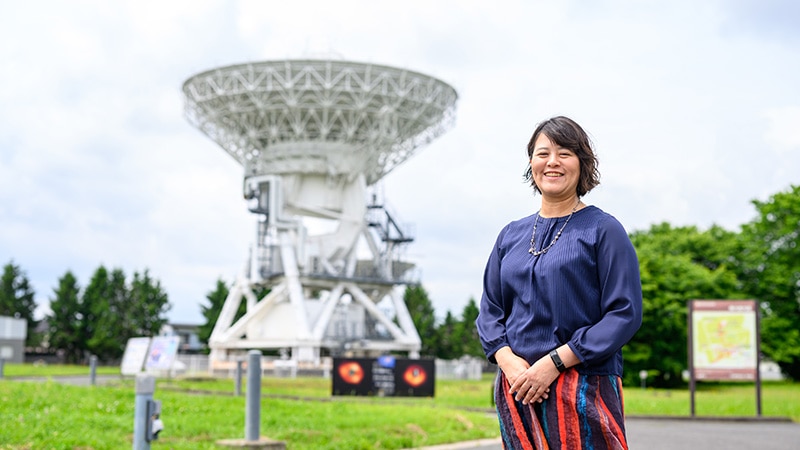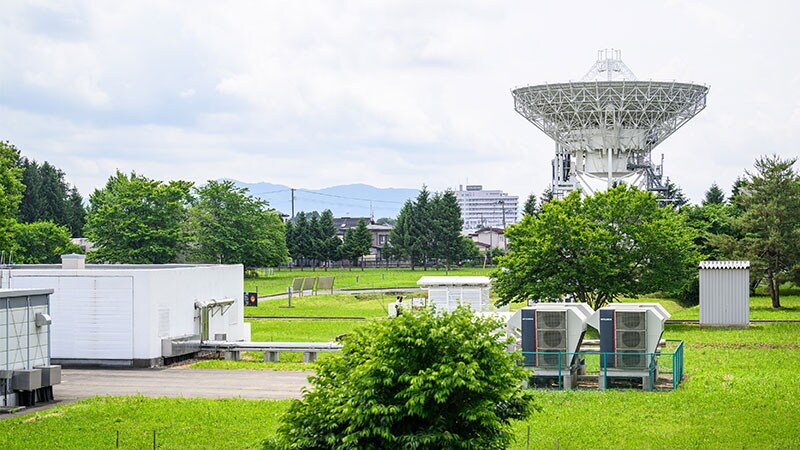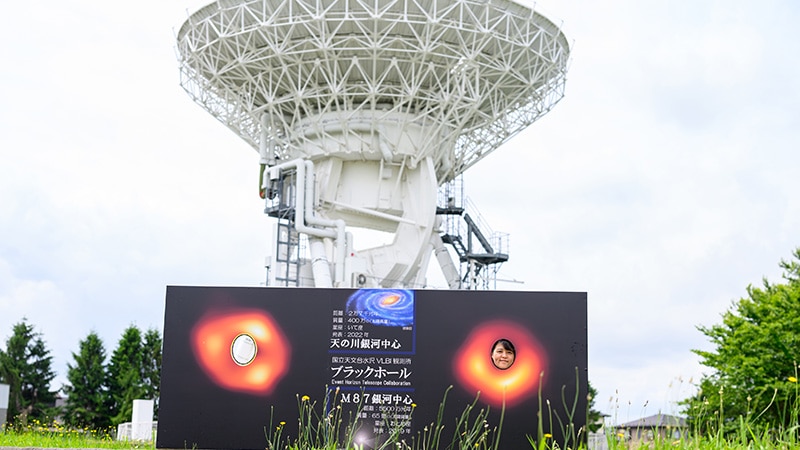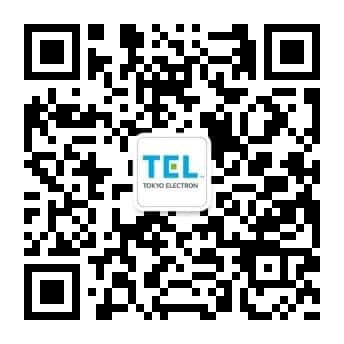Pursuing an Unusual Dual Career as a Researcher of Semiconductor Equipment and Astronomer
People

Fumie Tazaki is an astronomer studying black holes and researcher at Tokyo Electron Technology Solutions, where she uses data analytics for the development of semiconductor production equipment."Space and semiconductors may seem like two very different fields, but they have a lot in common," she says with a smile, "and they are equally interesting." How did she come to this unique career path? The following interview explores the background that led to her dual career, and what advice she’d like to give to future generations based on her experience in pursing the science and research she loves.
Profile
-

Fumie Tazaki
Tazaki devoted herself to black hole research at Kyoto University before becoming a postdoctoral researcher at NAOJ's Mizusawa VLBI Observatory in 2014. In this capacity, she joined an international network that coordinated telescopes around the world to successfully capture an image of a black hole. While continuing her research as an astronomer, Tazaki joined Tokyo Electron Technology Solutions in 2020 to also pursue research and development of semiconductor production equipment.
I Wanted to Study What is Far Too Distant and Mysterious
Tazaki has loved math and science since she was little. She was thrilled to solve difficult problems with just a few clues, and she was hooked. Her first attempt to become a college student and major in science wasn’t a success due to her devotion to playing in a school band and not preparing for the entrance exam early enough, so she spent a gap year to retake the exam. She says, "Taking an entire year to study was a good experience for me. I wanted to see how far I could go if I dedicated myself to studying."
In college, she took a variety of math and science courses, hoping to discover new interests.
In her third year of college, she decided to major in astronomy. "I loved the natural sciences, including geology, oceanography, and meteorology. But space is the furthest away from where we are, so it’s much more mysterious. I thought it would be more fun to study something we don't know very well."
Her knowledge of astronomy was limited first, but that stimulated her intellectual curiosity to learn new things. If you look at the serene night sky, you might think that space is full of tranquility. However, it is a vibrant place with invisible wavelengths of light and explosions everywhere.
"I would never have seen space in this way if I didn’t join the lab. It was eye-opening and made me even more curious."
Unimaginable Dream to Capture a Black Hole Image Came True
Tazaki joined a laboratory that explored space using X-rays emitted by celestial bodies. The focus of the research was on black holes. X-rays have higher energy than other types of lights in the spectrum. Although black holes are invisible, the gases around them react to gravity, emitting heat and light. In theory, X-rays could be used to visualize the activities of a black hole.
After five years of intensive research, Tazaki found herself at a turning point. She was unable to secure a job that would allow her to continue her research on black holes. Feeling a growing frustration, she received an offer from the Mizusawa VLBI Observatory of the National Astronomical Observatory of Japan (NAOJ). VLBI stands for very-long-baseline interferometry, which uses an array of radio telescopes to explore space. Although the means of research are different between X-ray and radio astronomy, Tazaki felt that the goal could be the same.
"The job description for the postdoctoral position was 'development of algorithms for black hole imaging.' I had the required programming skills, and I was excited about the possibility of capturing an image of a black hole. I had never dreamed of doing it in my lifetime, so I jumped at the opportunity."
While continuing her research, Tazaki got married at the age 28 and gave birth the following year. When she moved her research base from Tokyo to Iwate, her partner fully supported her.
"We Are the First in the World to See the Scenery 55 Million Light-Years Away"
The Mizusawa VLBI Observatory had participated in a project to image a black hole by networking radio telescopes around the world to configure the Event Horizon Telescope (EHT), an Earth-size virtual telescope. Tazaki was involved in developing algorithms to analyze radio wave signals received from a black hole and convert them into an image. She worked to establish the data processing method that would best render a realistic image.

The first set of observations for black hole imaging was carried out in 2017. A new statistical method known as sparse modeling was used to enhance image resolution with a small amount of data. The imaging process was compartmentalized and assigned to many groups of researchers with different expertise, all of which were new to Tazaki and enriched her experience.
5 years after Tazaki joined the research team, an image of a black hole was finally captured. "I had spent years preparing for this endeavor, and researched thoroughly. I felt that I couldn't do anything else, but there was no guarantee that the project would be successful during my tenure. I was relieved when I saw the outline of a black hole emerging in the picture and was impressed that we were the first in the world to see the black hole from 55 million light-years away."
It was a dream realized that Tazaki finally achieved something so distant, mysterious, and attractive as she had been pursuing since her college days.
The Dual Career of Astronomer and Semiconductor Engineer Made Possible with Everyone's Support
The year after the black hole project reached one of its peaks, Tazaki's postdoctoral position ended. When she was considering her career path, Tokyo Electron Technology Solutions offered a position where she could work as an employee for about half of the month and continue her research for the rest.
"I never knew I could work as an employee while continuing to be an astronomer. There was no role model, but I knew right away that I should accept. I love a new challenge. However, as this was an unprecedented arrangement for both me and the company, there was some uncertainty about how I could contribute to the Tokyo Electron (TEL) Group."
Tazaki joined Tokyo Electron Technology Solutions' Simulation Technology Development Department on a contract basis in 2020. She was tasked with R&D on semiconductor production equipment, using data analysis skills she had cultivated during her career as an astronomer. A statistical inference method known as sparse modeling, which was instrumental in the black hole imaging project, proved to be useful in performing analyses to ensure stable performance of semiconductor production equipment. Although a very different field from astronomy, semiconductor R&D also fascinates Tazaki.
"Whether it's the universe or a semiconductor, you can't just open it up and see what's inside, so you must use what little amount of information you have to figure out what it is. In fact, there are many similarities between space and semiconductor research, including the methods of statistical analysis and data processing."
Another similarity between space and semiconductors is that they both involve a wide variety of chemical elements. Originally, there were only hydrogen and helium in space. Then numerous nuclear fusions took place and stars were born, which in turn exploded and dispersed various chemical elements. "The resulting creations include the Earth, our bodies, and semiconductors," Tazaki says. "Everything is connected to space."
Three years after working on a contract basis and enjoying the best of both worlds, Tazaki became a full-time employee. At first, she still had a desire to do work more in astronomy.
"When I was debating accepting the role, everyone around me encouraged me to continue astronomy even if I started working full-time. My teammates are all very supportive, forward-looking, and inspiring. I really owe it to them that I am able to balance my research and my work."
I Want to Pass on the Love of Science to the Next Generation
Science has always been the cornerstone of Tazaki's career. "I would like to continue the practice of science, contribute to its advancement, and pass on my love of science to the next generation," she says. As STEM (science, technology, engineering, and mathematics) and other educational programs aimed at fostering young people capable of advancing science and technology gain attention, how is Tazaki considering the issue?
"Science is a kind of adventure that inspires me. I also enjoy exciting people with science. Fostering scientific talent in the next generation is a pressing issue for our society. It is often said that students are avoiding science, but there are a lot of children at elementary schools watching science experiments with curiosity, and more than a few are surprisingly knowledgeable about space. Unfortunately, their passion often wanes by the time they reach junior high school. Perhaps the problem lies in some difficult curriculums, or in a classroom environment that belittles hard-working students. If more young people can feel that 'learning is fun' and 'exploring knowledge is exciting,’ their academic and career choices will be more varied."
Make sure the excitement of the "aha" moment is always with you, Tazaki advises. Astronomy can be an excellent gateway to the joy of discovery. The night sky is accessible, interesting, and captures your imagination.
"Mind you, children often find topics such as the motion of the planets and the phases of the Moon difficult. I hope that these subjects can be taught in a way that keeps children interested. I’d also like to develop educational programs that teach children about semiconductors. It may seem like a difficult subject, but if you think about the chemical elements used to make semiconductors, you'll realize that they all come from nature, which may bring semiconductors a lot closer. I'd like to find what only I can do in my dual career as an astronomer and TEL employee and pursue whatever that is, to the best of my ability."




